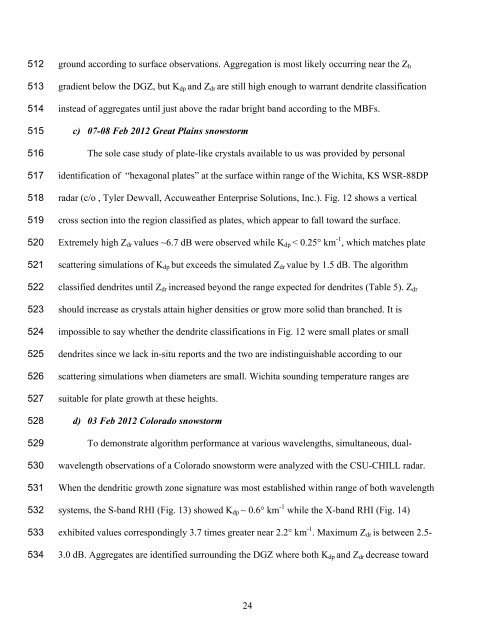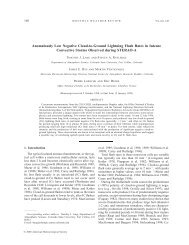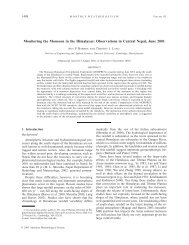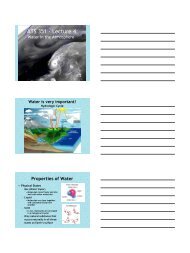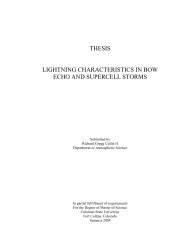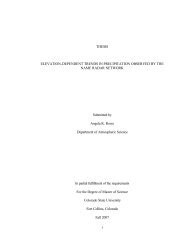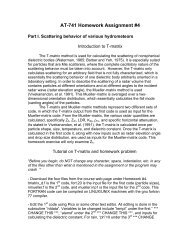1 A dual-polarization radar hydrometeor classification algorithm for ...
1 A dual-polarization radar hydrometeor classification algorithm for ...
1 A dual-polarization radar hydrometeor classification algorithm for ...
Create successful ePaper yourself
Turn your PDF publications into a flip-book with our unique Google optimized e-Paper software.
512513514515516517518519520521522523524525526527528529530531532533534ground according to surface observations. Aggregation is most likely occurring near the Z hgradient below the DGZ, but K dp and Z dr are still high enough to warrant dendrite <strong>classification</strong>instead of aggregates until just above the <strong>radar</strong> bright band according to the MBFs.c) 07-08 Feb 2012 Great Plains snowstormThe sole case study of plate-like crystals available to us was provided by personalidentification of “hexagonal plates” at the surface within range of the Wichita, KS WSR-88DP<strong>radar</strong> (c/o , Tyler Dewvall, Accuweather Enterprise Solutions, Inc.). Fig. 12 shows a verticalcross section into the region classified as plates, which appear to fall toward the surface.Extremely high Z dr values ~6.7 dB were observed while K dp < 0.25° km -1 , which matches platescattering simulations of K dp but exceeds the simulated Z dr value by 1.5 dB. The <strong>algorithm</strong>classified dendrites until Z dr increased beyond the range expected <strong>for</strong> dendrites (Table 5). Z drshould increase as crystals attain higher densities or grow more solid than branched. It isimpossible to say whether the dendrite <strong>classification</strong>s in Fig. 12 were small plates or smalldendrites since we lack in-situ reports and the two are indistinguishable according to ourscattering simulations when diameters are small. Wichita sounding temperature ranges aresuitable <strong>for</strong> plate growth at these heights.d) 03 Feb 2012 Colorado snowstormTo demonstrate <strong>algorithm</strong> per<strong>for</strong>mance at various wavelengths, simultaneous, <strong>dual</strong>wavelengthobservations of a Colorado snowstorm were analyzed with the CSU-CHILL <strong>radar</strong>.When the dendritic growth zone signature was most established within range of both wavelengthsystems, the S-band RHI (Fig. 13) showed K dp ~ 0.6° km -1 while the X-band RHI (Fig. 14)exhibited values correspondingly 3.7 times greater near 2.2° km -1 . Maximum Z dr is between 2.5-3.0 dB. Aggregates are identified surrounding the DGZ where both K dp and Z dr decrease toward24


